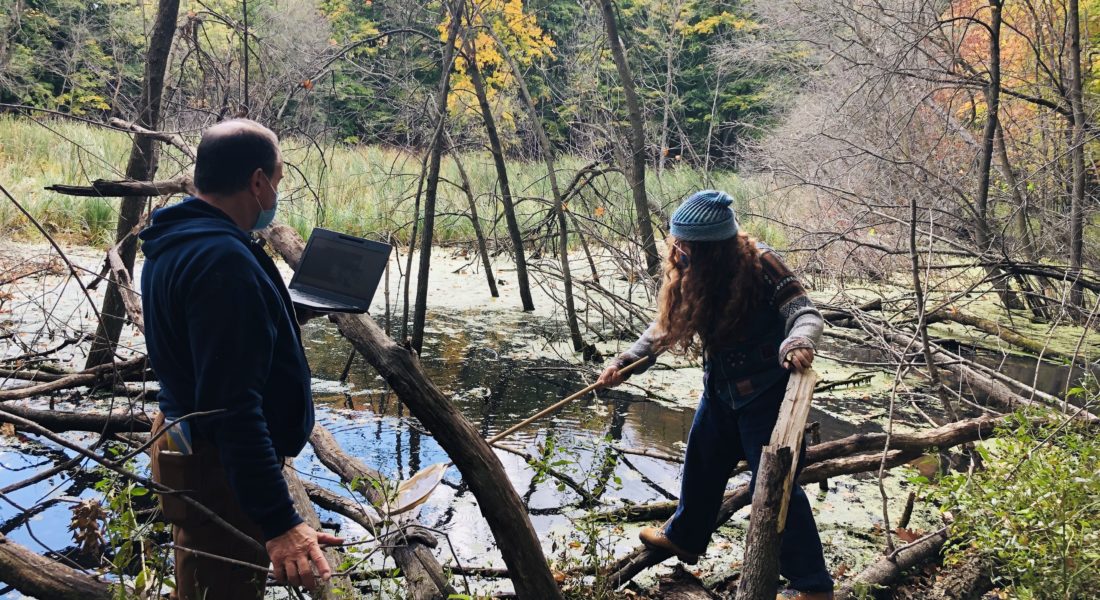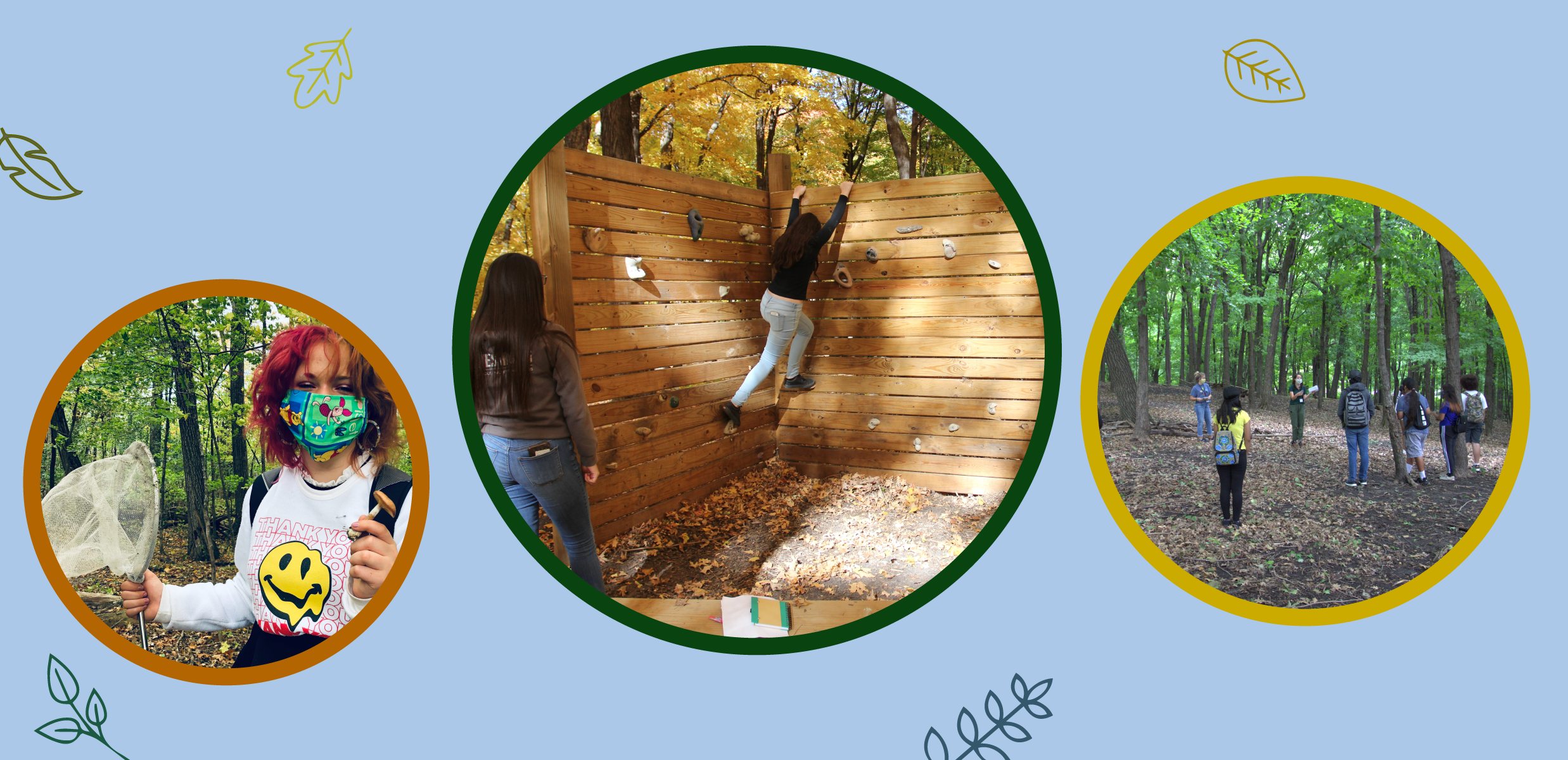
Making Nature Connections in New Ways
Programs at Tanadoona continue in Covid-safe ways to help youth connect with nature and each other.
The sounds of leaves crunched under foot. Loud laughs echoed in the woods. Cheers erupted in friendly competition as youth raced to build the most tents.
Summer looked different at Tanadoona this year.
Despite no summer camp, families, alumni and community members joined us at Tanadoona for DIY picnics throughout the summer. With their “camp-in-a-bag” kit, they explored Tanadoona’s forests, wetlands and pollinator garden. They made their own Tanadoona memories, hosting small birthday parties, taking part in scavenger hunt nature hikes, playing gaga ball and field games, and taking first-hand looks at the new Community & Dining Center.
As fall approached, in-person youth programming resumed at Tanadoona with COVID-19-safe measures. Groups like MIGIZI, Native Youth Council, and Integrated Arts Academy visited Tanadoona for environmental education led by Camp Fire Naturalists, community-building, and to experience the calming effects of nature.
“It was such a wonderful way to end our summer program. It was great to see how all those shy ones were coming out of their shells by the end of the day. I look forward to more collaborations!” shared John Gwinn, Strategic Projects Director at MIGIZI.
Many camp families can relate to seeing the shy kids come out of their shell during a week of summer camp, but as John shared it doesn’t take much time at all when out in nature and among engaging facilitators like our naturalists.

Camp Fire Teen Outdoor Leaders resumed meeting in-person twice a month in September. Primarily outdoors with masks on and maintaining social distance, these young leaders and nature enthusiasts are learning about topics of their choice like forest decomposers, evolution, and paleontology. They are also bringing their passion into their communities by designing nature education posters and buttons. Plus, with virtual and hybrid schooling, time spent away from the screen is a true relief. “After six hours a day on an iPad, it’s relaxing to get outside,” notes Cash, 13.
Younger campers attending MEA Day Camp are just as eager to be exploring the outdoors. With hands full of leaves and pockets full of acorns following a hike through the woods, campers identified leaves and taught each other how they distinguish leaves from various trees and the venation of each leaf type.
“This is also a palmate like the other ones,” Ethan, age 7, pointed out. “Palmate has a stem in the middle and it branches out. A pinnate—there’s a straight line down the middle and the lines are like boom, boom, boom,” gesturing to the veins extending perpendicularly from the center vein.
Another young camper chimes in holding a milkweed pod she found and begins to open it up for other campers to see. Surrounded by curious faces, she told the group how monarchs lay eggs on milkweed and that these types of plants help protect butterflies.

Camp Fire youth are resilient. Through Camp Fire programs, they continue to grow as friends and environmental stewards, despite the many changes in their lives over the past nine months. Through it all, Tanadoona is a place where youth and adults can make meaningful connections with one another, themselves and nature.
Coming up: Our My Nature Connection resource library continues to grow, and virtual and in-person programs continue with partner organizations and schools, including plans for 2021 school-break and summer camps, always adapting to provide a safe and positive nature experience.
Support Camp Fire Minnesota with a tax-deductible donation. Kids need nature. You make it possible. Thank you!